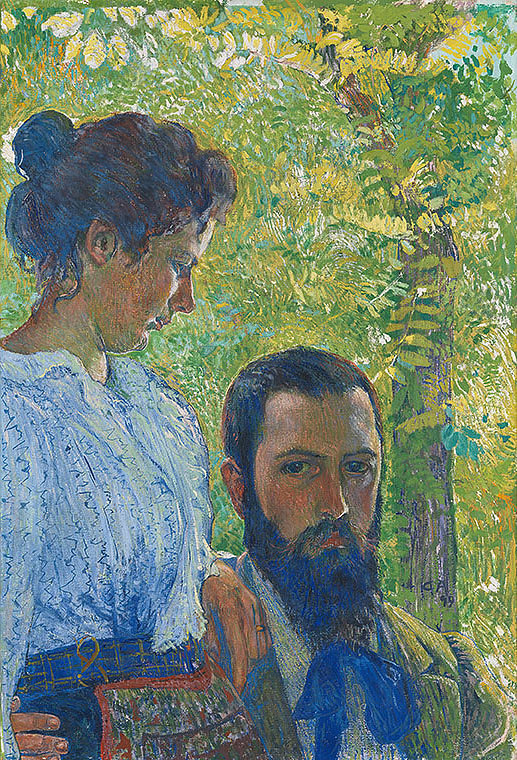
Cuno Amiet, Self-Portrait with Wife, 1899, tempera on canvas, 76 x 52 cm, Collezione Città di Lugano, © D. Thalmann, Aarau, Switzerland. Sources and material analyses indicate that Amiet used an egg-and-oil tempera, known as «Lompeck’s tempera», for this work
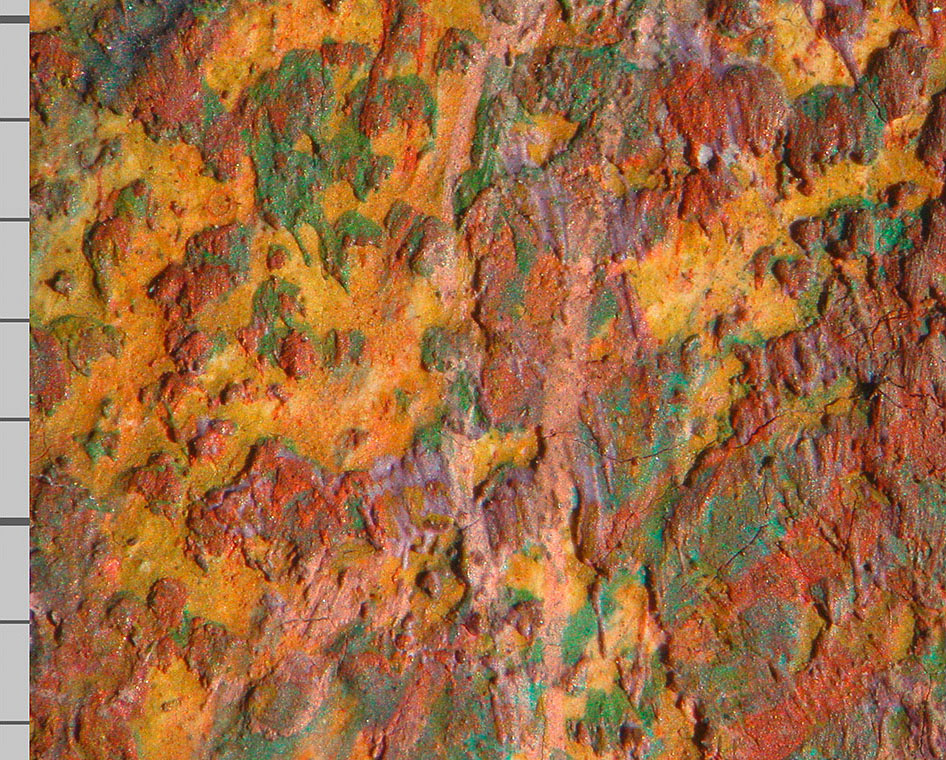
Cuno Amiet, Self-Portrait with Wife, detail from the cheek of Anna Amiet. The paint, applied in many layers, was so thick and pastyy on application that the separate brushstrokes do not seem to cohere but to consist of an accumulation of fraying paint fragments
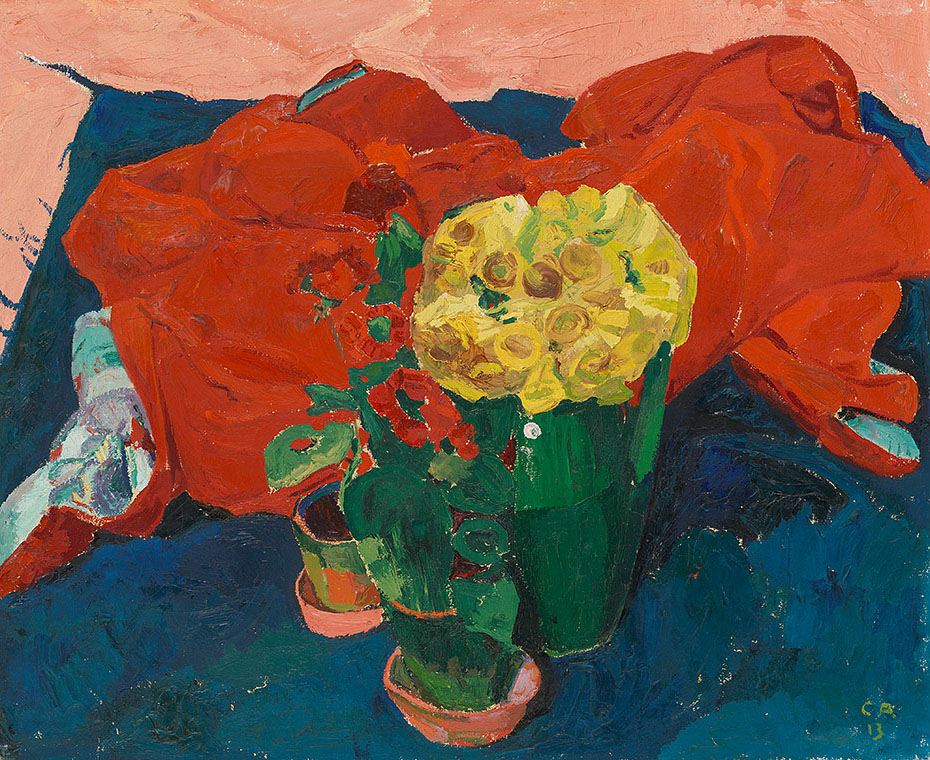
Cuno Amiet, Still Life with Red Cloth, 1913, oil on textile, 59 x 72.5 cm, Kunstmuseum Solothurn, © D. Thalmann, Aarau, Switzerland. The colour of the yellow petals was pigmented with strontium and cadmium yellow and and has now turned severely brown in places
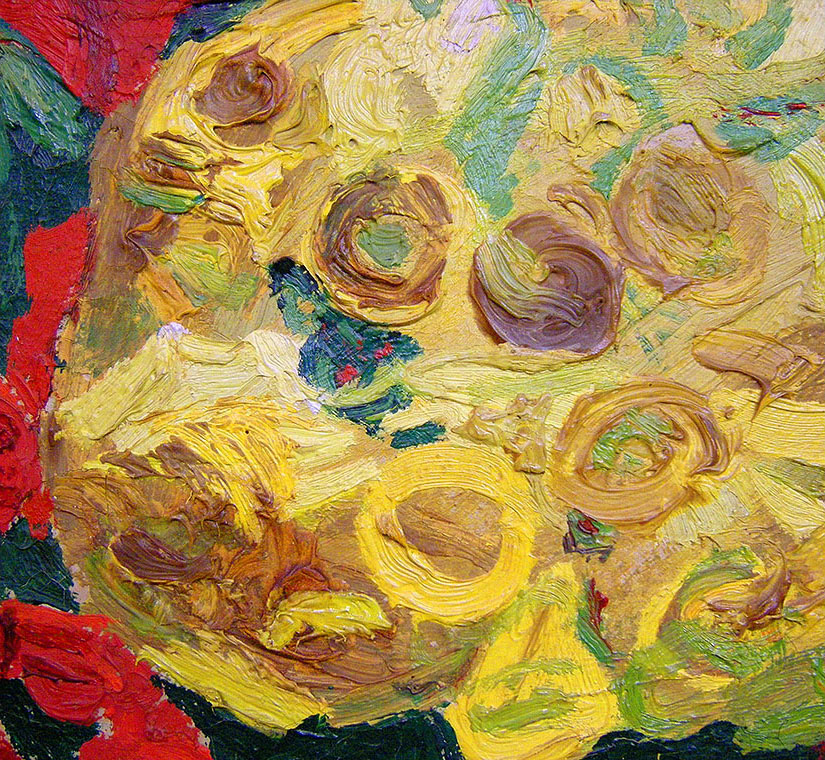
Cuno Amiet, Still Life with Red Cloth, detail, in oblique light, with browning
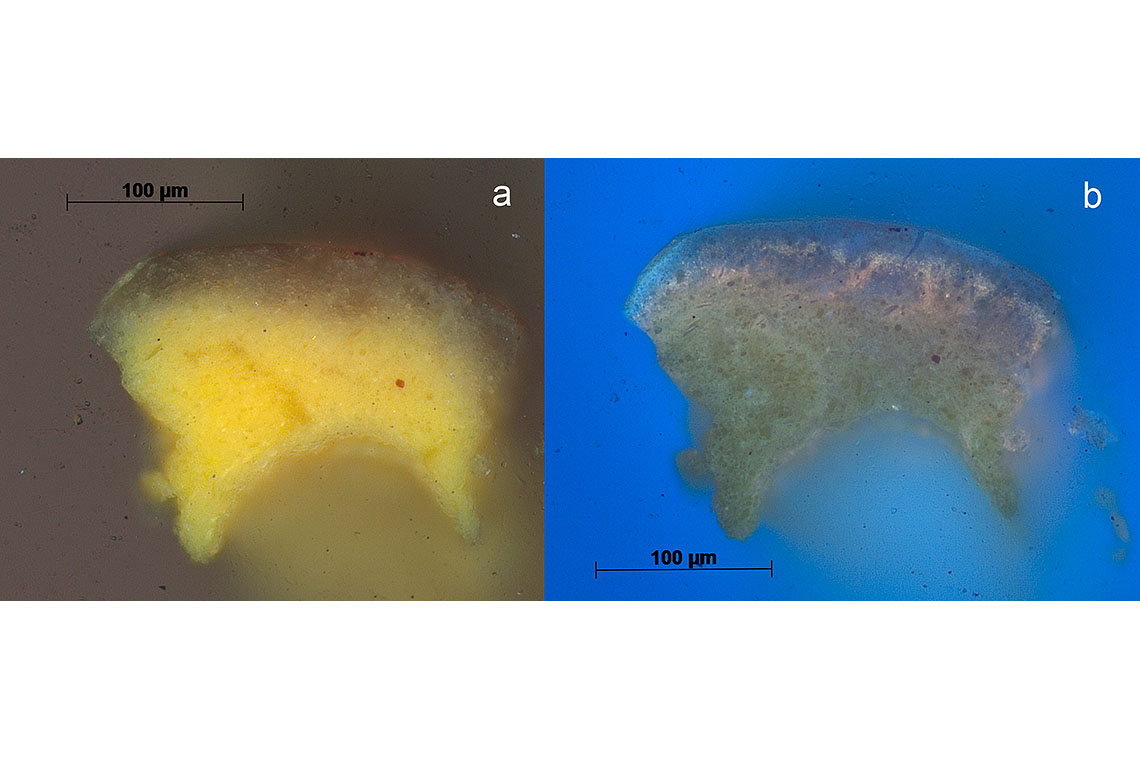
Cuno Amiet, Still Life with Red Cloth, cross-section of a paint sample from an area that was originally yellow and is now brown. a) Observed in a light microscope (brightfield, crossed polarisation filters). The browning is only superficial; deeper down the colour is unchanged. b) The same sample, observed under UV-radiation (365 nm). The changed surface contains slighlty fluorescing components
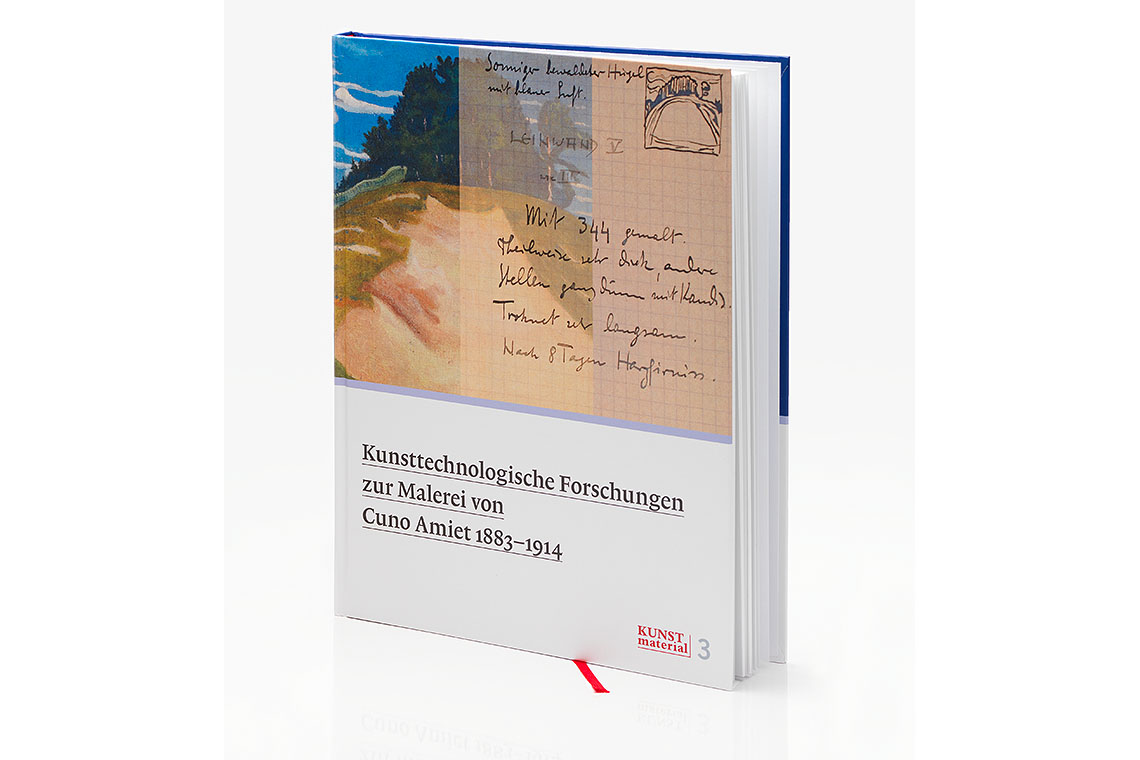
Publication «Kunsttechnologische Forschungen zur Malerei von Cuno Amiet 1883–1914»